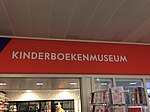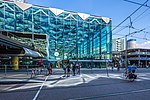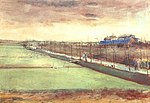Royal Library of the Netherlands

The Royal Library of the Netherlands (Dutch: Koninklijke Bibliotheek or KB; Royal Library) is the national library of the Netherlands, based in The Hague, founded in 1798. The KB collects everything that is published in and concerning the Netherlands, from medieval literature to today's publications. About 7 million publications are stored in the stockrooms, including books, newspapers, magazines and maps. The KB also offers many digital services, such as the national online Library (with e-books and audiobooks), Delpher (millions of digitized pages) and The Memory (about 800,000 images). Since 2015, the KB has played a coordinating role for the network of the public library.
Excerpt from the Wikipedia article Royal Library of the Netherlands (License: CC BY-SA 3.0, Authors, Images).Royal Library of the Netherlands
Prins Willem-Alexanderhof, The Hague Haagse Hout
Geographical coordinates (GPS) Address Nearby Places Show on map
Geographical coordinates (GPS)
| Latitude | Longitude |
|---|---|
| N 52.080658333333 ° | E 4.3267638888889 ° |
Address
Nationaal Archief
Prins Willem-Alexanderhof
2595 BZ The Hague, Haagse Hout
South Holland, Netherlands
Open on Google Maps











